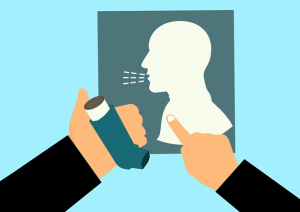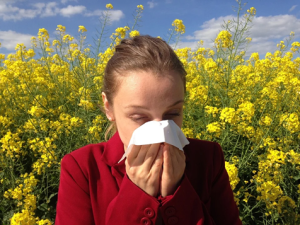If you have asthma, you know the kind of effect it can have on your ability to exercise, perform strenuous activities, and even manage everyday tasks. What you may not be quite so familiar with is how this lung condition affects you on an internal level, and how asthma and similar lung diseases develop.

The best way to treat your asthma is by making an effort to better understand it. The more you learn about pulmonary diseases, the better equipped you will be to manage their presence in your life.
Get to know the symptoms, causes, and methods of diagnosis for asthma so you can take better care of yourself.
What Is Asthma?
Asthma is a condition that causes inflammation in the tubes (bronchioles) that supply your lungs with air. This causes these tubes to narrow, restricting your airflow and causing wheezing, coughing, and shortness of breath.
Asthma is a chronic condition, which means it can reappear frequently or constantly throughout your life. You may experience asthma every day, or only once every few weeks or months, depending on the type of asthma you have and the environment you’re in.
There is no known cure, but there are many ways to alleviate your symptoms, much like other pulmonary diseases.
Pulmonary Diseases
Pulmonary diseases are conditions that primarily impact the function of the lungs, and asthma is a pulmonary disease in which airflow is obstructed. Pulmonary diseases can also affect other parts of your respiratory system, such as the pharynx or trachea.
Asthma is one of the most common pulmonary diseases, affecting millions of Americans and millions more across the globe.
Asthma Related to Allergies

The most common type of asthma is allergen-induced, meaning wheezing and shortness of breath is related to the presence of pollen, dust, dander, and other allergens in your environment. Other irritants like smoke, cold air, and strong fragrances can cause this condition as well.
If your asthma is related to your allergies, it’s important to know your individual triggers so you can avoid an asthma attack whenever possible.
Your doctor may also suggest the use of antihistamines or an inhaler.
Non-Allergic Asthma
Non-allergic or non-atopic asthma is less common, and it tends to develop later in life. This is a type of asthma that is present all the time, not just around an allergen, and is therefore not connected to your immune system response.
This type of asthma can often have more severe symptoms that tend to show up more frequently. Most non-atopic asthma can be controlled through the use of beta-agonist medications like albuterol, which relaxes the smooth muscles in your bronchioles to improve airflow.
Sometimes, asthma-like symptoms can be triggered by heavy exercise. This is not technically asthma and is instead called exercise-induced bronchoconstriction, but since it also involves the narrowing of the airways, it is a similar lung condition. It can be effectively treated by engaging in less exerting exercise and letting yourself rest.
Causes of Lung Disease
Asthma, like similar lung diseases, can have a number of different causes. Some of these are genetic, while others may be a result of your environment, lifestyle, or age.
Genetics
According to the World Health Organization (WHO), most cases of asthma are believed to be about half genetic and half environmental. People with blood relatives who have asthma are more susceptible to developing it themselves.
Infection
Some bacterial and viral infections can increase your risk of developing asthma, or make already existing asthma worse. This depends on the severity of the infection and how well your body is able to defend against it. Some people may have no long-term effects from a given infection, while others may have to deal with reduced lung capacity and inflammation as a chronic problem.
It’s important to seek proper medical treatment when you get sick so you can reduce the risk of developing long-term complications. Additionally, if you already have asthma and you develop a respiratory infection, you may have a higher risk of experiencing more severe complications. Reduce your risk level by taking proper safety precautions like washing your hands and quitting smoking.
Smoking and Inhaling Other Toxins
Smoking and the inhalation of other toxins like asbestos can damage your airways and the alveoli in your lungs. Cigarette smoke can also narrow your airways, making it much harder for you to breathe. As a result, smoking can lead to a higher rate of asthma flare-ups and contribute to more life-threatening conditions like lung cancer.

Certain disinfecting products produce vapors that have been linked to increased rates of developing asthma and having asthma attacks as well. These include bleach, wood polish, and some air fresheners.
Managing Asthma and Other Lung Conditions
Asthma can be a restrictive condition, but it’s far from impossible to manage. Get to know your individual triggers and avoid them so you can avoid any asthma attacks that may follow.
Pay attention to your breathing so you can pick up on the signs of an asthma attack as early as possible and react accordingly. Speak to your doctor about getting an emergency inhaler or other medications.
You can also manage your asthma in small ways every day by taking good care of your lungs. Avoid unnecessary exposure to toxins, practice routine exercise, and maintain good physical fitness. These will all help limit the harmful effects of asthma.
Final Thoughts
Asthma and similar pulmonary diseases can interfere with your life from time to time, but now that you better understand asthma, you can take more effective steps to avoid developing it or keep it under control.
Taking care of your lungs, whether you have asthma or you’re trying to avoid it, is just another part of maintaining good physical fitness.
